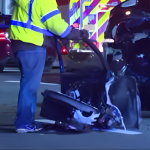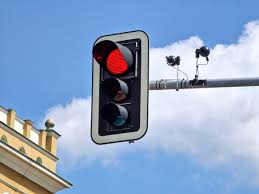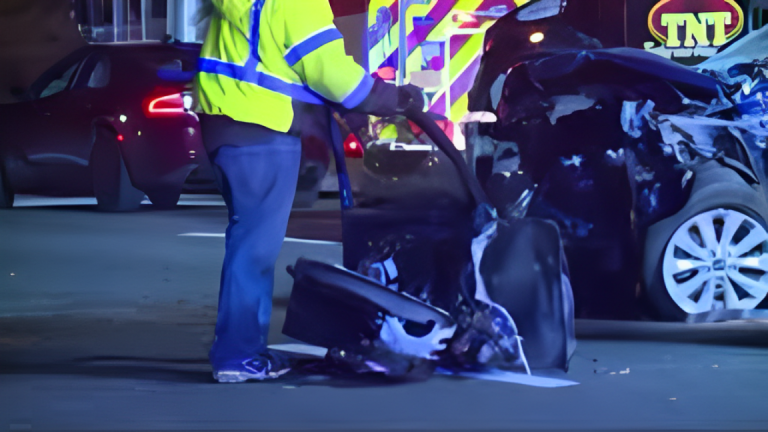Do you ever feel the frustration of waiting at a red light when there’s no oncoming traffic, and you just want to make a quick right turn? It’s a common scenario many drivers experience daily. Fortunately, Oregon law allows right turns at red lights, but only under specific conditions. If you’re in Oregon and wondering how the right turn on red rule works, this article will guide you through everything you need to know.
The simple rule is: you can make a right turn at a red light, but only after coming to a complete stop and yielding the right of way to oncoming traffic and pedestrians. It’s a straightforward regulation, but it’s important to understand when and where this rule applies to avoid fines and ensure safety.
In this comprehensive guide, we’ll dive into the key aspects of Oregon’s right turn on red rule, when it’s allowed, when it’s prohibited, and how you can ensure you’re making safe right turns at red lights.
What is the Right Turn on Red Rule in Oregon?
The rule for turning right at a red light in Oregon is designed to help improve traffic flow and reduce unnecessary delays at intersections. When you approach a red light and intend to turn right, the law allows you to make the turn after you’ve completely stopped your vehicle. However, this maneuver is only allowed under specific conditions, and understanding these requirements can save you from accidents or penalties.
Here’s the breakdown of when the right turn on red rule is allowed and when it is prohibited.
When is it Allowed?
In most cases, you can make a right turn at a red light after following these essential steps:
- Come to a Full Stop: Always stop your vehicle completely at the stop line or at the crosswalk if there’s no stop line present. This is the first and most crucial step.
- Yield to Oncoming Traffic: You must yield to all vehicles approaching from the opposite direction, including those turning left. If there are any vehicles coming from the left side of the intersection, make sure they have completely cleared the intersection before proceeding with your right turn.
- Yield to Pedestrians: You must also give pedestrians the right of way. If there are people crossing the street in the direction you want to turn, wait for them to safely cross before you proceed. It’s vital to always be extra cautious around pedestrians, especially children or those with mobility limitations.
- Yield to Cyclists: In Oregon, cyclists are treated the same as pedestrians when they are in a crosswalk. If a cyclist is crossing the street in the crosswalk, you must yield to them just as you would for a pedestrian.
When is it Prohibited?
While the right turn on red rule is generally allowed, there are exceptions when making a right turn on red is prohibited. It’s essential to be aware of these situations to avoid any violations or accidents.
- Posted Signs Prohibiting Right Turn on Red: Some intersections have signs that explicitly prohibit making a right turn on red. These signs are usually in place for safety reasons, such as limited visibility or heavy pedestrian traffic. Always pay attention to these signs, and come to a complete stop even if there’s no visible traffic coming from any direction.
- When the Light Turns Yellow: A yellow light is not a signal to proceed; rather, it’s a caution to slow down and prepare to stop. If you approach an intersection with a yellow light, don’t attempt to turn right immediately. Wait for the light to turn red and only consider making a right turn after you’ve come to a complete stop and checked for any traffic or pedestrians.
- Limited Visibility at the Intersection: If the intersection has limited visibility, whether due to tall buildings, parked cars, trees, or any other obstruction, you should avoid making a right turn on red. In such cases, always stop fully at the intersection and ensure you can see all oncoming traffic and pedestrians before making your turn.
- Intersections with Poor Lane Markings or Complex Layout: In certain situations where the intersection has complex lane configurations or unclear lane markings, it’s safer to wait for the green light before turning right. Proceeding on red in such conditions may increase the risk of accidents or confusion.
How to Make Safe Right Turns on Red
Making a safe right turn on red isn’t just about following the rules – it’s also about being aware of your surroundings and ensuring the safety of everyone around you. Here are some tips to make sure you’re turning safely:
- Be Extra Cautious Around Pedestrians: Always look for pedestrians before making your turn. Pedestrians often have the right of way, and drivers should never assume that a pedestrian will wait for them to turn. Even if you think the coast is clear, it’s always better to double-check for pedestrians, especially in busy areas.
- Check for Cyclists: Cyclists may be traveling in the same direction as you, but they may be more difficult to spot. Always check your mirrors and look for cyclists before turning right at a red light. They are considered pedestrians in crosswalks, so you must yield to them.
- Don’t Rush Your Turn: Even though you might be in a hurry to turn, don’t rush your right turn. It’s better to take a few extra seconds to make sure the intersection is clear than to risk causing an accident by rushing.
- Be Aware of Local Traffic Conditions: Each intersection may have its own set of rules or patterns, depending on local traffic flow. For example, in high-traffic areas or during peak hours, it’s even more important to be cautious and ensure that the intersection is clear before making your right turn.
- Stay Calm and Patient: While the right turn on red rule allows for quicker movement through intersections, don’t let impatience get the best of you. If the situation doesn’t feel safe or you’re unsure, it’s always better to wait for the green light. It’s important to prioritize safety over speed.
Disclaimer – Our editorial team has thoroughly fact-checked this article to ensure its accuracy and eliminate any potential misinformation. We are dedicated to upholding the highest standards of integrity in our content.



























+ There are no comments
Add yours